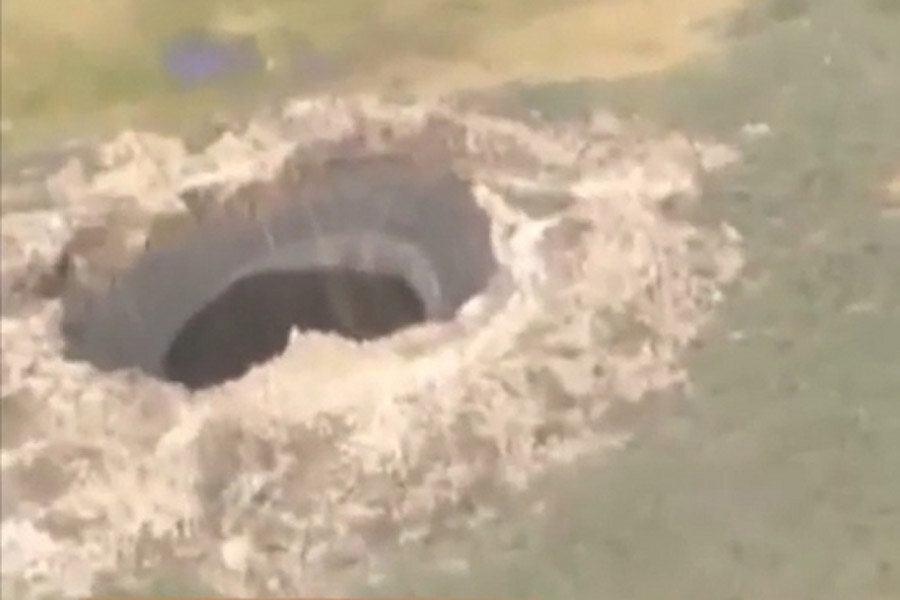Giant craters continue to appear mysteriously in Siberia
Loading...
If you’ve got plans to visit the end of the world, a word of caution: keep an eye on the ground beneath you.
Siberia’s Yamal Peninsula, which means ‘end of the world,’ is becoming increasingly porous, according to scientists at the Russian Academy of Sciences (RAS). Last July, a sinkhole measuring 260 feet in width was reported in the region. Researchers now suggest that up to 30 more could litter the cold earth.
Since the discovery of the first Yamal crater, nine more have been reported in the region. Additionally, the crater known as B2 is apparently flanked by 20 water-filled “baby craters,” the Siberian Times reports.
And Vasily Bogoyavlensky, deputy director of the RAS-affiliated Oil and Gas Research Institute, expects to find even more.
“I would compare this with mushrooms: when you find one mushroom, be sure there are few more around,” Dr. Bogoyavlensky told the Siberian Times. “I suppose there could be 20 to 30 craters more.”
Whatever is creating these chasms is still largely unknown. Some Antipayuta residents reported seeing a flash in the vicinity of one crater, while others in the Yamal district noted feeling tremors. Russian scientists have named one possible culprit, however: methane.
Bogoyavlensky suspects that gas emissions – possibly even gas explosions – could have formed the craters. A thaw of the Arctic landscape could have allowed underground gas reserves to burst outward, he says. Researchers have previously observed ‘degassing’ in Yamal lakes – the release and subsequent rising of gas from lakebed – which seems to support Bogoyavlensky’s theory.
The craters have only been seen up close by local reindeer herders – so far, scientists have viewed them only from helicopters. Researchers hope to examine more thoroughly, but the potentially volatile nature of such crevices will make them difficult to study.
“These objects need to be studied, but it is rather dangerous for the researchers,” Bogoyavlensky said. “We know that there can occur a series of gas emissions over an extended period of time, but we do not know exactly when they might happen.”
Unchecked, gas emissions could cause “serious damage” to drilling rigs and nearby communities, according to Bogoyavlensky.
“It is important not to scare people,” Bogoyavlensky said, “but to understand that it is a very serious problem and we must research this.”








